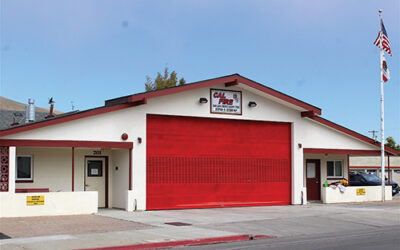With San Luis Obispo County now the fifth least-affordable place to live in the entire United States, County Supervisors are going to see if voters are willing to help do something about this.
On March 10, Supervisors directed the staff to continue working on placing a $40 million housing bond measure on the November 2020 Presidential Election ballot and also putting a similar bond measure on the ballot that would raise some $40 million to repair, replace, and upgrade the county’s public libraries.
The dueling ballot measures would both increase property taxes — by some $3.85 per $100,000 in assessed value per year to landowners over 20-years for the housing bond; and $3.73 per $100,000 in assessed value per year to landowners over a 20-year debt term for the library bond.
If both received the necessary two-thirds majority for approval, then property taxes would rise some $5.58 per $100,000 of assessed value per year. With the median price of a home now about $615,000 in SLO County, that would mean paying an additional $34.32 a year in property taxes should both pass.
And it would be a countywide tax, so even landowners within incorporated cities would also have to pay it. However, that also means the money would be available for projects within cities, too.
Principal County Administrative Analyst, Carolyn Berg, said the housing bond would provide about $4 million a year for 10 years, repaid over 20 years, to assist in building affordable housing by developers and housing agencies throughout SLO County.
The housing bond is intended to create a funding source so builders do affordable housing, said Berg.
She noted that under a State housing mandate, SLO County must plan for an additional 10,800 housing units spread across all the cities and towns, by 2028.
All cities and the County are currently updating the housing elements of their general plans to reflect this new mandate, she explained. Those updates are due by the end of 2020.
She said the plan is to bring a draft ballot measure back to Supervisors in early June and have a final draft ballot measure ready to send to the County Elections Office by June 16, to appear on the November ballot.
The County library department is working on the ballot measure covering the library repair and maintenance bond. As we previously reported, the County Library System has millions of dollars in overdue maintenance and facility upgrades, and the City of Paso Robles needs to build a new library, so the decision was made to lump Paso Robles’ needs in with the rest of the County into one bond measure.
Under the initial plan, every library in SLO County would get some kind of upgrade. Several communities — Atascadero, Morro Bay, Cayucos and Cambria among them — have all either gotten new library buildings, remodeled their old facilities, or as in the case of Los Osos need new buildings.
Both County teams will be reaching out to the voters and educating the community on the bonds, their costs and purposes, explained Berg. County Planning and Building Department, she added, will be putting together a plan for workshops and town hall events, and doing an online survey to gauge community priorities with regards to the housing bond.
The County already hired consultants. In December 2019, the County contracted with EMC Research Inc. and Clifford Moss to conduct the feasibility study for both potential bond measures. A total of 952 mixed-mode surveys (telephone and email-to-web) were conducted in mid-January 2020. Among the findings were:
- Some 45% of respondents indicated either affordable housing or homelessness as the most important problem facing San Luis Obispo County;
- Initial support for the housing bond stands at 57-58%; after positive messaging, it stands at 59-60%; and then falls to 55-56% after negative messaging; and,
- Initial support for the library bond stands at 48-50%; after positive messaging, it stands at 53-54%; and then falls to 48-49% after negative messaging.
With these initial results, both bond measures would seem to have an uphill climb, as each needs two-thirds (66%) approval in order to pass.


